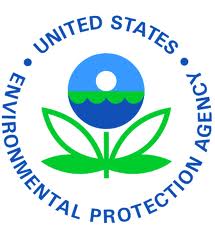 |
According to the June 2013 announcement, the current, and now ongoing, initiatives are:
- Keeping raw sewage and contaminated stormwater out of waterways. The initiative focuses on combined sewer overflows (CSOs), sanitary sewer overflows (SSOs), and municipal separate storm sewer systems (MS4s) and uses the new Integrated Municipal Stormwater and Wastewater Planning Approach Framework to help cities develop and employ integrated planning solutions. The Framework prioritizes Clean Water Act (CWA) requirements according to health and environmental protection necessity, and allows users to incorporate “all or part of an integrated plan … into the remedy of enforcement actions.” As part of the initiative the EPA is touting green infrastructure alternatives, including rain gardens, green roofs, and permeable pavement, to minimize pollution from stormwater and SSOs, when applicable to the situation.
- Preventing animal waste from contaminating surface and ground waters. The EPA will continue its enforcement activities focused on concentrated animal feeding operations (CAFOs) to protect water sources and vulnerable communities. CAFOs that meet the thresholds for number of animals are required by the CWA to obtain National Pollution Discharge Elimination System (NPDES) permits if they “discharge manure, litter, or process wastewater into waters of the U.S.” The EPA will continue to enforce both the acquisition of NPDES permits and compliance with permit requirements.
Forget expensive calls to lawyers and consultants. With Enviro.BLR.com, you get instant access, 24/7. Try it out today and get an the 2013 EHS Salary Guide, absolutely free. Download Now.
- Cutting toxic air pollution that affects the health of communities. In this initiative, the EPA is specifically zeroing in on toxic air pollutants in three areas with high rates of industry noncompliance:
(1) Leak detection and repair,
(2) Reduction of the volume of waste gas to flares and improvements to flare combustion efficiency, and
(3) Excess emissions including emissions from start-up, shutdown, and malfunctions.
- Reducing widespread air pollution from the largest sources. The EPA has ramped up enforcement of Clean Air Act (CAA) requirements for New Source Review/Prevention of Significant Deteriorization (NSR/PSD) for new facilities and those undergoing “significant modifications.” According to the EPA, this is warranted due to low compliance with the requirement to install state-of-the-art pollution controls resulting from “excess emissions of air pollutants such as sulfur dioxide, nitrogen oxides and particulate matter.” Particular attention is being paid to the coal-fired utilities, cement, glass, and acid sectors to bring them into compliance with the CAA and protect human health and the environment.
- Reducing pollution from mineral mining processing operations.According to EPA’s Toxic Release Inventory (TRI), the mining and minerals processing industry sector is the number one generator of hazardous and toxic waste. Not surprisingly, more than 120 such sites are on the Superfund National Priorities List and the EPA continues to add more each year. Among the environmental and health impacts are contaminated drinking water supplies, lead-contaminated soils, and toxic spills that reach waterways causing fish kills and negatively impacting local communities. The EPA has spent more than $2.4 billion to address these problems so far and will continue its enforcement initiative into the future.
Everything You Need for Environmental Compliance
Enviro.BLR.com puts everything you need at your fingertips, including practical RCRA, CAA, CWA, hazardous waste regulatory analysis and activity, news, and compliance tools. Try it at no cost or risk and get a FREE report.
- Assuring energy extraction sector compliance with environmental laws. With the advent of increased hydraulic fracturing for natural gas in shale, the EPA is aiming to maximize the value of the recovered natural gas by enforcing responsible development that protects the air, land, and water of the United States. The EPA notes that “natural gas development has led to a significant rise in air pollution throughout the intermountain West,” and adds that “geospatial analysis suggests that a similar rise in air pollution is possible elsewhere as unconventional gas development grows in other shale plays.” In addition, concerns about drinking water well contamination are common in areas near hydraulic fracturing activities. To address all of these potential impacts, EPA’s Office of Enforcement and Compliance Assurance (OECA) initiated the Energy Extraction National Enforcement Initiative in 2011 and will continue to enforce all applicable regulations and laws to ensure that natural gas development proceeds in a manner protective of human health and the environment.
